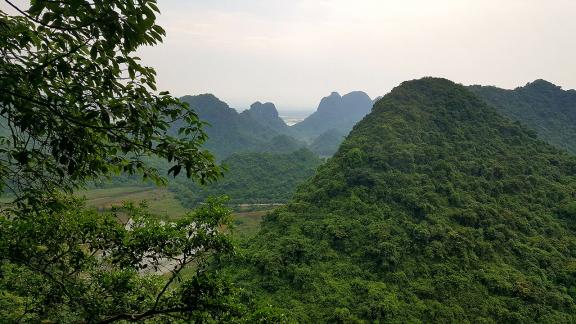The Green Climate Fund's recent decision to pay Brazil USD 96.5 million for keeping Amazon forests standing in 2014 and 2015 shows the concept of REDD+ is starting to pay off for countries stepping up efforts to halt deforestation.
The decision by the GCF Board in February marks GCF's first REDD+ results-based payment.
Results-based payments are the final phase in REDD+ that provides financial incentives to developing countries that have proved through rigorous UN-backed technical evaluation they have halted deforestation during a period of time.

GCF Principal Forest and Land Use Specialist Juan Chang said Brazil's project marks a major turning point in helping turn REDD+ from a topic of years of UNFCCC negotiations into payments for achievement of past activities on the ground.
"This results-based payment shows how major efforts by developing countries like Brazil to halt deforestation can, and should, be acknowledged," said Mr Chang.
Brazil will reinvest the USD 96.5 million it receives from GCF for REDD+ activities that come under its Nationally Determined Contribution (NDC) as a signatory to the Paris Agreement.
These activities, planned by the Brazilian Government together with GCF project partner UNDP, include financially rewarding farmers, and indigenous and traditional communities for conserving and restoring native vegetation. They will also include measures to prevent illegal deforestation.
REDD+ refers to the UNFCCC-based accounting and funding mechanism that supports developing countries' efforts to Reduce Emissions from Deforestation and forest Degradation, and (the plus) foster conservation, sustainable management of forests, and enhancement of forest carbon stocks.
REDD+ was designed through a series of yearly International climate negotiations to become a key plank of climate finance by combining the ecological benefits of halting deforestation with mitigation gains in reducing greenhouse gas emissions by keeping carbon locked in the landscape. Its use as a major source of funding for demonstrated achievements by developing countries in halting deforestation, however, remains at a nascent stage.
The climate gains to be made in preserving forests are substantial. Deforestation and forest degradation are the second largest cause of global warming, contributing to the nearly 24 percent of global greenhouse gas emissions, making it larger than the world's transport sector. Conserving and restoring forests are critical to meet the 1.5C target as stated in the last Intergovernmental Panel on Climate Change (IPCC) report.
Dan Nepstad, executive director of the Earth Innovation Institute, said GCF's results-based payment to Brazil marks a positive step in the "greatest global effort in history to end tropical deforestation, driven largely by the importance of tropical forests for tackling climate change."
"Brazil has contributed more to climate change mitigation than almost any other nation—through its ambitious and very expensive strategy to slow Amazon deforestation," said Mr Nepstad, who has been studying Brazil's forests since the 1990s.
GCF encourages other relevant developing countries to join Brazil in applying for REDD+ results-based payments.
One of the requirements to be eligible for results-based payments is to receive UNFCCC recognition that the period countries set in measuring the emissions avoided from preventing deforestation and forest degradation is sound.
These are based on measurement baselines known as forest reference emission levels and/or forest reference levels (known as FRELs). So far, 42 countries have submitted their FRELs to the UNFCCC.